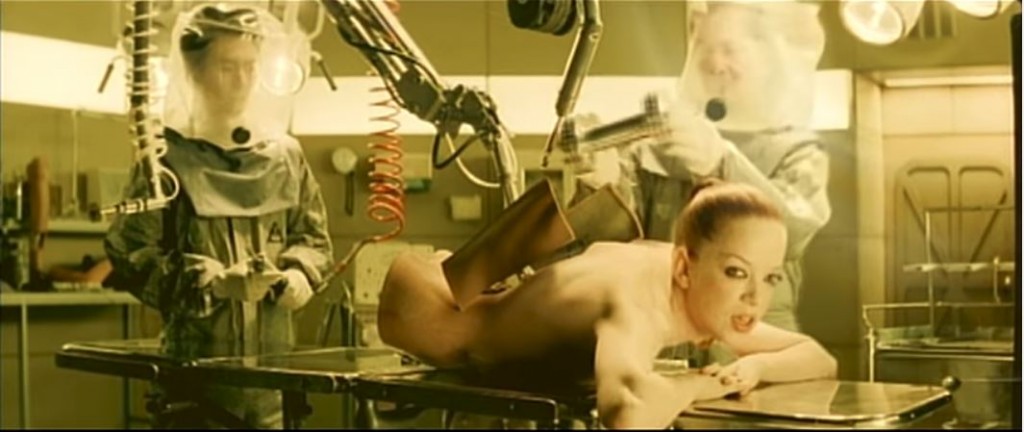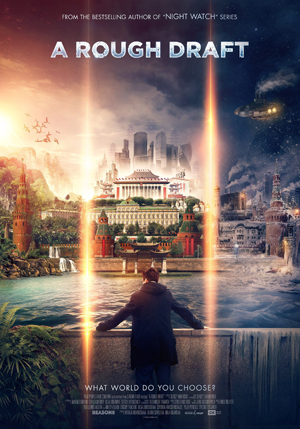Fantasia 2018, Day 12, Part 3: Questions and Answers with Shinsuke Sato
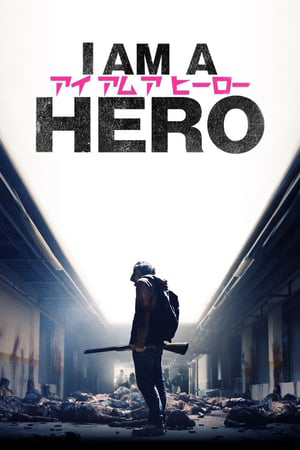 Yesterday I reviewed three of the movies I saw on Monday, July 23. Today I’ve written up my notes on the post-film question-and-answer sessions with the director of all three, Shinsuke Sato. All of what follows comes from my handwritten notes, and so may contain errors that crept in due to my hearing or transcription skills. Further, Sato spoke in Japanese, which was translated into either English or French depending on what language the questioner used, and while my French is competent enough that I caught most of the answers in the first two sessions, by the time the third session wrapped up it was near or past midnight.
Yesterday I reviewed three of the movies I saw on Monday, July 23. Today I’ve written up my notes on the post-film question-and-answer sessions with the director of all three, Shinsuke Sato. All of what follows comes from my handwritten notes, and so may contain errors that crept in due to my hearing or transcription skills. Further, Sato spoke in Japanese, which was translated into either English or French depending on what language the questioner used, and while my French is competent enough that I caught most of the answers in the first two sessions, by the time the third session wrapped up it was near or past midnight.
First came zombie-apocalypse horror film I Am a Hero. Sato was asked how the movie was accepted by the producers and backers, and he said that it was rare to have this sort of film in the mainstream in Japan. Since roughly 2000, TV stations have been financing films, and they prefer material aimed at a more general audience. This film was backed by Toho, who wanted to make something that could not be made by a TV station. It was a good fit for Sato, as he’d made the two live-action Gantz films with Toho a dozen years before.
Asked if it was important to him to be respectful of the manga, he said the manga was unique; the film ran the risk of coming off as a simple zombie movie. Sato wanted to make a zombie film a little unlike any made before, while the manga creator put a certain amount of pressure on him by asking him simply to make a zombie film he would like. Asked about how he came up with the idea of zombies with a personality (carrying on with what they were obsessed with in life), Sato said that was in the manga, although he imagined a few of his own for the film. He said it was important for him to make Japanese zombies, creatures in some way distinct from American zombies. Zombies often come as hordes, individuals indistinct from each other, but he wanted to have each be individual.
He was asked about an early scene in the film, when Hideo has to confront his girlfriend, Tekko, who has been turned into a zombie; and specifically how he created her uncanny movement. Sato noted that Tekko was a high jumper in the original, and that he wanted to capture that energy. As the first zombie to appear in the film, she would have a high impact. He said he used three people to get her across, the actress, a stunt double, and a contortionist who is in the Guinness World Records. Asked about the lack of narrative payoff for the character of Hiromi, Sato said he’d cut a scene at the end that would have explained she was a hybrid who was the key to curing the virus. He decided it was more important to keep the focus on Hideo’s character arc rather than ruin the flow with explanations.
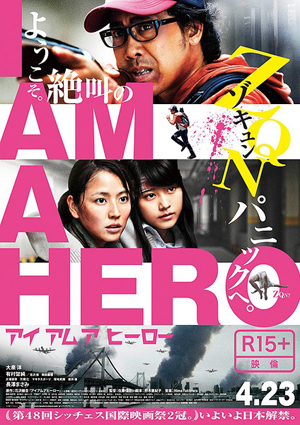 I had three consecutive movies I wanted to watch on July 23. All three came from director Shinsuke Sato, all three were live-action manga adaptations, and all three were followed by question-and-answer sessions with Sato (the first at the De Sève Theatre, the second two at the larger Hall). I’ll write up what he had to say about his films in a separate post tomorrow. Today, my impressions of the movies themselves: the zombie apocalypse thriller I Am a Hero, the supernatural epic Bleach, and the science-fictional super-hero movie Inuyashiki. Note that I have read precisely none of the original works these movies were based on, and can speak only to the films I saw.
I had three consecutive movies I wanted to watch on July 23. All three came from director Shinsuke Sato, all three were live-action manga adaptations, and all three were followed by question-and-answer sessions with Sato (the first at the De Sève Theatre, the second two at the larger Hall). I’ll write up what he had to say about his films in a separate post tomorrow. Today, my impressions of the movies themselves: the zombie apocalypse thriller I Am a Hero, the supernatural epic Bleach, and the science-fictional super-hero movie Inuyashiki. Note that I have read precisely none of the original works these movies were based on, and can speak only to the films I saw.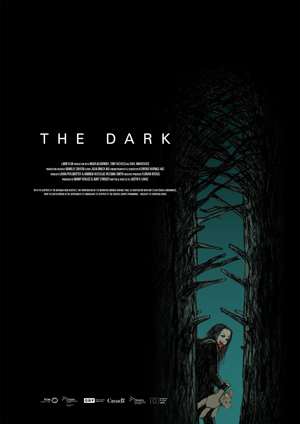 I had four movies on my schedule for Monday, July 23. Three of them were the work of one director. But before I got to those, I had an intriguing horror film at the J.A. De Sève Theatre to watch first: The Dark.
I had four movies on my schedule for Monday, July 23. Three of them were the work of one director. But before I got to those, I had an intriguing horror film at the J.A. De Sève Theatre to watch first: The Dark.


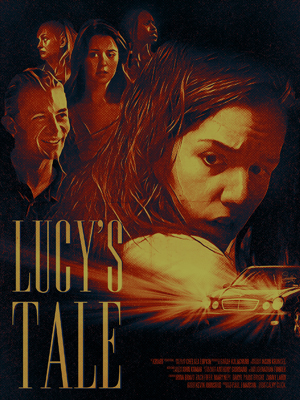 The third and last screening I saw on Saturday, July 21, was a selection of short films: the 2018 Born of Woman Showcase, presenting short genre works by women filmmakers. This year saw nine movies from eight countries.
The third and last screening I saw on Saturday, July 21, was a selection of short films: the 2018 Born of Woman Showcase, presenting short genre works by women filmmakers. This year saw nine movies from eight countries. I had three screenings I planned to attend at Fantasia on Saturday, July 21. The last would be a showcase of short films, but the first two were features. The day would begin at the Hall Theatre with The Travelling Cat Chronicles, an adaptation of a Japanese novel about a cat and assorted humans. Then would come Da Hu Fa, a 3D animated film from China about a diminutive martial-arts master seeking a lost prince within a hidden valley.
I had three screenings I planned to attend at Fantasia on Saturday, July 21. The last would be a showcase of short films, but the first two were features. The day would begin at the Hall Theatre with The Travelling Cat Chronicles, an adaptation of a Japanese novel about a cat and assorted humans. Then would come Da Hu Fa, a 3D animated film from China about a diminutive martial-arts master seeking a lost prince within a hidden valley.